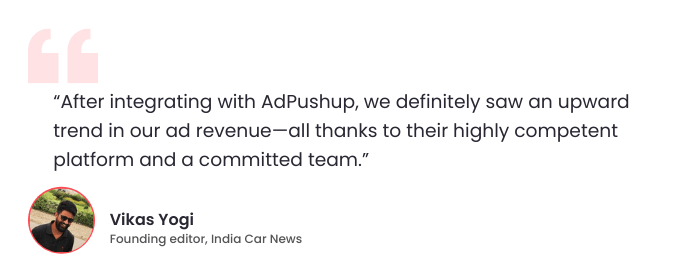Privacy continues to be a topic of discussion in the digital advertising landscape.
Google has no option but to improve privacy and find alternatives to invasive ways of tracking.
The outcome of these efforts is Federated Learning of Cohorts (FLoC), which provides a privacy-preserving mechanism for advertisers and publishers.
In this post, you’ll learn about FLoC: what it is, how’s it different from other privacy measures, and why’s it receiving a backlash.
Let’s get scrolling:
What is FLoC?
FLoC (Federated Learning of Cohorts) enables a medium for advertisers to target ads without exposing the details of an individual user. It does so by grouping people of similar interests and behaviour in the form of ‘cohorts.’
The cohorts are generated through a federal learning algorithm, and users are grouped in different cohorts based on their online activities.
Interestingly, small cohorts are grouped until they have thousands of users in them – making it harder for anyone to identify individual users.
Case in point, cohorts do not represent a collection of people but a cluster of similar browsing activities. Thus, instead of identifying users asindividuals, FLoC aims to make users a part of a cohort where individuality is completely lost.
How is FLoC different?
With third-party cookies, publishers could track individual internet users as they move around the web.
FLoC is Google’s alternative to 3P cookies. This privacy sandbox API is based on machine learning, which allows browsers to anonymously study internet users and group them into ‘cohorts.’
The highlight of FLoC API is that it restricts sharing of a user’s browsing history, even with Google.
As a user moves from one website to another, their browser uses FLoC’s algorithm to find its ‘interest cohort (a group that will be the same for thousands of other users with similar browsing interests).
With FLoC, the browser periodically recalculates all the cohorts without sharing the individual data with the browser or any third-party vendors.
Learn more:
How to Recover from Third-Party Cookie Blocking
Google Privacy Sandbox: A Look at the Alternative to Third-Party Cookies
Can Cohort’s Change?
A browser’s cohort can definitely change. Users don’t visit the same website every day, their interests also change over time. Hence, it’s important for cohorts to consistently change.
An individual person’s browser will float in and float out of a cohort whenever their browsing behavior changes. As of now, Google expects browsers to reshuffle cohorts once a week.
“Cohorts are dynamic and will update every seven days during the initial trial. As a person’s browsing behavior changes, their browser will assign them to a different FLoC cohort that reflects those interests.
For example, at one point they might be in a FLoC cohort with thousands of other people who have also recently visited websites about gardening and travel overseas, and then at another point in time they could be in a group of people who have recently visited sites about art supplies and cooking.”
– Ginny Marvin, Google Ad Products Liaison
One of the highlights of FLoC is that Google is not making a massive list of demographics or interests themselves. Instead, it plans to use a federated learning algorithm to create cohorts automatically.
Learn more:
What is FLEDGE in the Privacy Sandbox?

Why are some browsers against FLoC?
Privacy-conscious browsers (Vivaldi, Brave, DuckDuckGo) have warned internet users against FLoC. These browsers aren’t ready to enable the FLoC algorithm, and plan to block it on their end.
According to DuckDuckGo, FLoC is Google’s new tracking method which will enable creepy advertising without third-party cookies.
“The worst aspect of FLoC is that it materially harms user privacy, under the guise of being privacy-friendly. Others have already detailed many of the ways FLoC is harming privacy. We note here just three aspects of FLoC that are particularly harmful and concerning,”
– Brave CEO and co-founder Brendon Eich wrote in a blog post.
Bennet Cyphers also points out that the federal learning algorithm is very likely to create cohorts that could be dangerous. For example, the algorithm can create cohorts around sensitive categories such as medical history, sexuality, or race. In other words, it can identify someone as being part of an ‘at-risk’ group.
In response to this, the Chrome team has said that they will analyse all cohorts to see if they are related to sensitive topics and then, the search engine will not serve those cohort IDs.
If a cohort represents a lot of people who’ve visited sites belonging to sensitive categories, the entire cohort will be removed.
Similarly, websites can also exclude a specific page from FLoC calculation. This can be done by setting the permissions-policy header for that page.
Can you try FLOC?
You can take part in the origin trial and try FLoC. The FLoC API is available in chrome 89 and above.
It’s easy to implement FLoC API. You need to provide cohort Id and version, which looks like this:
const { id, version } = await document.interestCohort();
console.log(‘FLoC ID:’, id);
console.log(‘FLoC version:’, version);
Here’s what the cohort data looks like:
{
id: “14159”,
version: “chrome.1.0”
}
The version value helps FLoC-enabled websites to learn which browser and FLoC model the cohort refers to.
Is it compulsory for websites to share information?
Websites can opt-in or opt-out of FLoC. For example, websites about sensitive topics can opt-out of FLoC and prevent their users from being included in FLoC’s cohorts.
In Closing
Google is ready to change the way internet users are tracked. If it sticks to its roadmap, Chrome will soon restrict all websites from using third-party cookies.
Hence, the search engine is moving ahead with FLoC’s origin trial. The feature will slowly be introduced on Chrome through usual processes – beta version, and then final shipping for all users.
FLoC’s initial testing is happening with a small percentage of users from the U.S, Australia, Brazil, India, Canada, Japan, Mexico, Philippines, and New Zealand. Google will expand trials to other countries and regions as the privacy sandbox grows.
But we’re still asking if FLoC can serve its original purpose or it will eventually become another data point for fingerprinting.
So, if you’re a developer, publisher, advertiser, or part of the ad tech industry, you can create an issue on the FLoC Explainer Repository and contribute to the discussion.
Frequently Asked Questions?
Q1. What are cohorts in FLoC?
Cohorts represent a cluster of similar browsing activities. They are generated through a federal learning algorithm, and users are grouped in different cohorts based on their online activities.
Q2. Why is FLoC is bad idea?
While FLoC can avoid the third-party cookies privacy risks, it also has potential to create new threats in the process. It may result in predatory targeting, discrimination, and identification of sensitive groups with behavioural ads.
Q3. How does FLoC work?
FLoC helps advertisers use behavioral targeting without the third party cookies. The federal learning algorithm runs in Google’s Chrome browser and tracks a user’s online behavior anonymously.

Shubham is a digital marketer with rich experience working in the advertisement technology industry. He has vast experience in the programmatic industry, driving business strategy and scaling functions including but not limited to growth and marketing, Operations, process optimization, and Sales.








